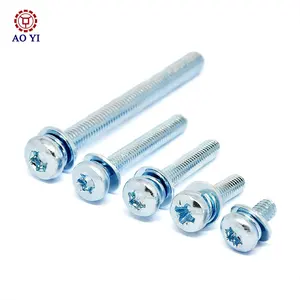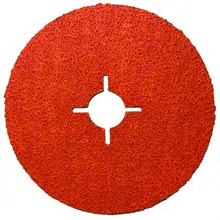Introduction
In the realm of DIY projects, mastering the right techniques can be the difference between a successful outcome and a frustrating experience. One such method that has revolutionized the DIY landscape is the Double Screw Technique. This innovative approach, originally used in the production of full-arch prosthetics on divergent implants, has found its way into various applications, from twin-screw extruders to woodworking. The technique, which combines function, stability, and aesthetics, involves a unique CAD/CAM workflow and the use of specific tools. This article delves into the understanding of the Double Screw Technique, its benefits, comparison with the single screw method, and a step-by-step guide on its implementation, including safety measures and case studies.
Understanding the Double Screw Technique
The Double Screw Technique is a revolutionary method used in the production of full-arch prosthetics on divergent implants. This technique addresses the challenge of striking a balance between function, stability, and aesthetics in the final restoration. It involves the use of a titanium bar and a secondary framework made of a basic resin. The design incorporates an innovative CAD/CAM workflow, with additional screws integrated to secure the superstructure to the bar. This technique allows for the production of highly stable, bar-supported rehabilitations without compromising aesthetics.
Benefits of the Double Screw Technique
The double screw technique, specifically in twin-screw extruders, offers numerous advantages. It allows for intuitive understanding of wear and tear, reducing production costs and improving labor efficiency. This technique also boasts high torque and speed, making it ideal for processing high viscosity and heat-sensitive materials. Furthermore, it has a wide range of applications, suitable for processing various materials, and can achieve high output, quality, and efficiency.
Comparing Single Screw and Double Screw Techniques
The double screw technique has been compared with the single screw method in the context of odontoid fixation. Both techniques have shown efficacy, with the single screw method achieving a union rate of 81% and the double screw method slightly higher at 85%. Despite the difference, statistical analysis revealed no significant advantage of one over the other. This comparison provides valuable insights into the effectiveness of both techniques, which can be applied to various DIY projects.
How to Implement the Double Screw Technique
The Double Screw Technique is implemented in the production of full-arch prosthetics on divergent implants. The restoration involves a titanium bar and a secondary framework made of a basic resin. The primary structure's design incorporates an innovative CAD/CAM workflow, integrating additional screws to secure the superstructure to the bar. A popular CAD/CAM software is used to visualize the virtual screw threads within the bar design. The titanium bar is then screwed to the implants, and the secondary structure is attached to the bar, ensuring stability and aesthetics.
Tools Required for the Double Screw Technique
The Double Screw Technique requires specific tools for its implementation. The primary tool is the CAD/CAM Thread milling bur, available in two variants: one for titanium and another for chrome-cobalt. These tools are designed for milling threaded channels. Another essential tool is the Double Screw Metal Screw, used for attaching the secondary structure onto the bar. Lastly, a Screwdriver for Double Screw Metal Screw is needed, available in different lengths. These tools are integral to the successful application of the Double Screw Technique.
Step-by-Step Guide to Applying the Double Screw Technique
The Double Screw Technique involves a careful process. First, a titanium bar and a secondary framework are designed using CAD/CAM workflow, with additional screws integrated for attaching the superstructure to the bar. A popular CAD/CAM software is used to visualize the virtual screw threads within the bar design. The titanium bar is then screwed to the implants and the secondary structure to the bar. This technique allows for highly stable, bar-supported rehabilitations without compromising aesthetics.
Safety Measures When Using the Double Screw Technique
When implementing the double screw technique, it's crucial to follow safety measures to avoid complications. Proper positioning of the lag screw is vital to prevent mechanical issues like lag screw cut-out. It's recommended to practice diligent operative techniques to achieve anatomic fracture reduction. Also, it's important not to advance the lag screw without the anti-rotation blade in place. The technique should be completely controlled by the operator during the operation. Following these safety measures can help ensure a successful outcome with the double screw technique.
Case Studies: Successful DIY Projects Using Double Screw Technique
The DIY project of creating a Double Screw Wooden Vice, although unfinished, provides valuable insights into the application of the double screw technique. The creator used a wooden rod, board, and thread cutter to construct the vice. Despite facing challenges with the wooden threads getting stuck, the project demonstrates the potential of the double screw technique in DIY woodworking. The creator's experience also underscores the importance of choosing the right type of wood and using appropriate tools for successful implementation of the double screw technique.
Conclusion
The Double Screw Technique has proven to be a game-changer in the world of DIY projects. Its versatility and efficiency have made it a preferred choice for many, offering a balance between function, stability, and aesthetics. Despite the slight edge in efficacy over the single screw method, it's important to note that both techniques have their merits and can be applied effectively in various projects. Implementing the Double Screw Technique requires careful planning, the right tools, and adherence to safety measures. The case study of the Double Screw Wooden Vice underscores the potential of this technique in DIY woodworking, demonstrating that with the right approach, the double screw technique can truly revolutionize your DIY projects.











































 浙公网安备 33010002000092号
浙公网安备 33010002000092号 浙B2-20120091-4
浙B2-20120091-4